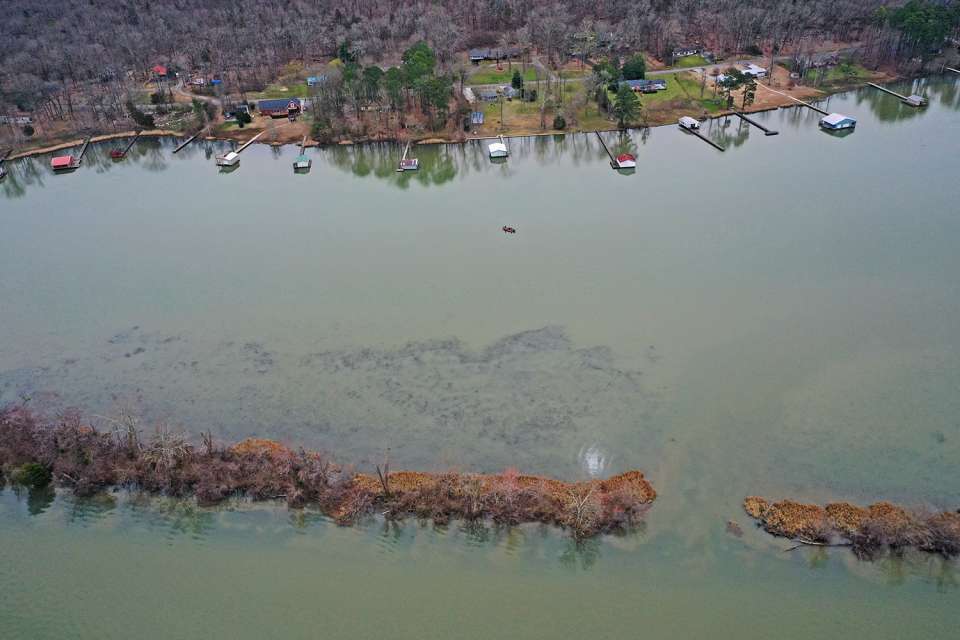
GUNTERSVILLE, Ala.—Could too much of a good thing be bad? The answer is yes, when it comes to the current state of aquatic vegetation as it relates to bass fishing on Lake Guntersville, site of the Academy Sports + Outdoors Bassmaster Classic presented by Huk.
The culprit is eelgrass. It is growing so dense on the Tennessee River that once productive areas are now carpeted over with it. Eelgrass is now the dominant vegetation in the lake, even more so than the hydrilla and milfoil that made the lake famous.
There is another reason why eelgrass will be a player this week at the Classic. Eelgrass uprooted by fluctuating water levels and strong current is the reason why. In that scenario, the eelgrass breaks free, forms thick, massive mats and gets moved by the wind and current. Eventually, the mats settle and cover up promising fishing spots.
“You can’t get as many productive casts in an area as you normally do, because the lure gets fouled up in the eelgrass,” said Mark Menendez. “So, it’s a deterrent in those situations, and the eelgrass covers the river from end to end.”
Native Floridian Drew Benton, with a lifetime of fishing through the nuances of aquatic vegetation, had this to say about the density of the eelgrass.
“You must have backup plans for some areas, because if the wind blows in matted eelgrass they get covered up and you can’t fish them,” he explained. “Even the free-floating individual strands, and they are so dense, can make a lure presentation impossible.”
Many other anglers interviewed for this article said the same thing.
“It can wash into your good area, cover it all up, and you can’t fish it,” said Tennessean Brandon Lester.
Eelgrass is a native plant, so it’s not the enemy. And too much of a good thing brings opportunity.
“The eelgrass is making us rethink how to fish vegetation in this part of the Tennessee River system,” said Menendez. “In years past, we had well defined hydrilla edges, milfoil points that served as ambush areas, open holes where the fish positioned to ambush bait.”
Now, the sweet spot in the vast sea of grass is in finding the very same transition areas that work along the shoreline. Think areas where gravel and boulders mix; bluff walls and points intersect.
“Anywhere that you can find irregularities in the vegetation, like a rare mix of hydrilla or milfoil in the eelgrass is what to look for,” added Menendez.
Lester added this to the new chapter of bass fishing in the grass on Guntersville.
“What I’ve found as it evolved is the fish don’t like to be inside the eelgrass, as they do milfoil and hydrilla,” explained Lester. “They don’t get in it, they get around it.”
Bill Lowen is a believer in the potential of the eelgrass—without the lure fouling qualities.
“Anytime you have grass in a lake the fish are going to live in it,” he said. “Guntersville is no different, because it has all kinds, even the eelgrass.”
For that reason, Lowen and his peers believe vegetation will play a major role in the top patterns.
“It will be like solving a riddle, putting together the pieces of a puzzle,” he continued. “Whoever finds the right combination of grass the fish are using will do well.”
In other words, finding the needle in the haystack of eelgrass could pay $300,000 to the winner, along with solving the other challenges of the week that include water clarity, temperature and current.

